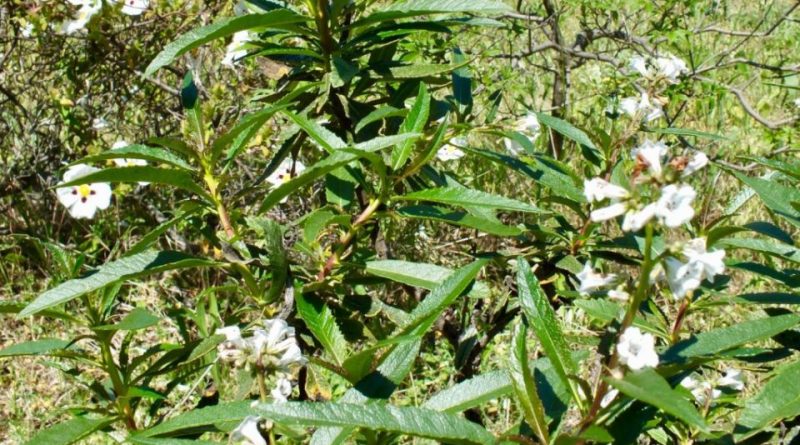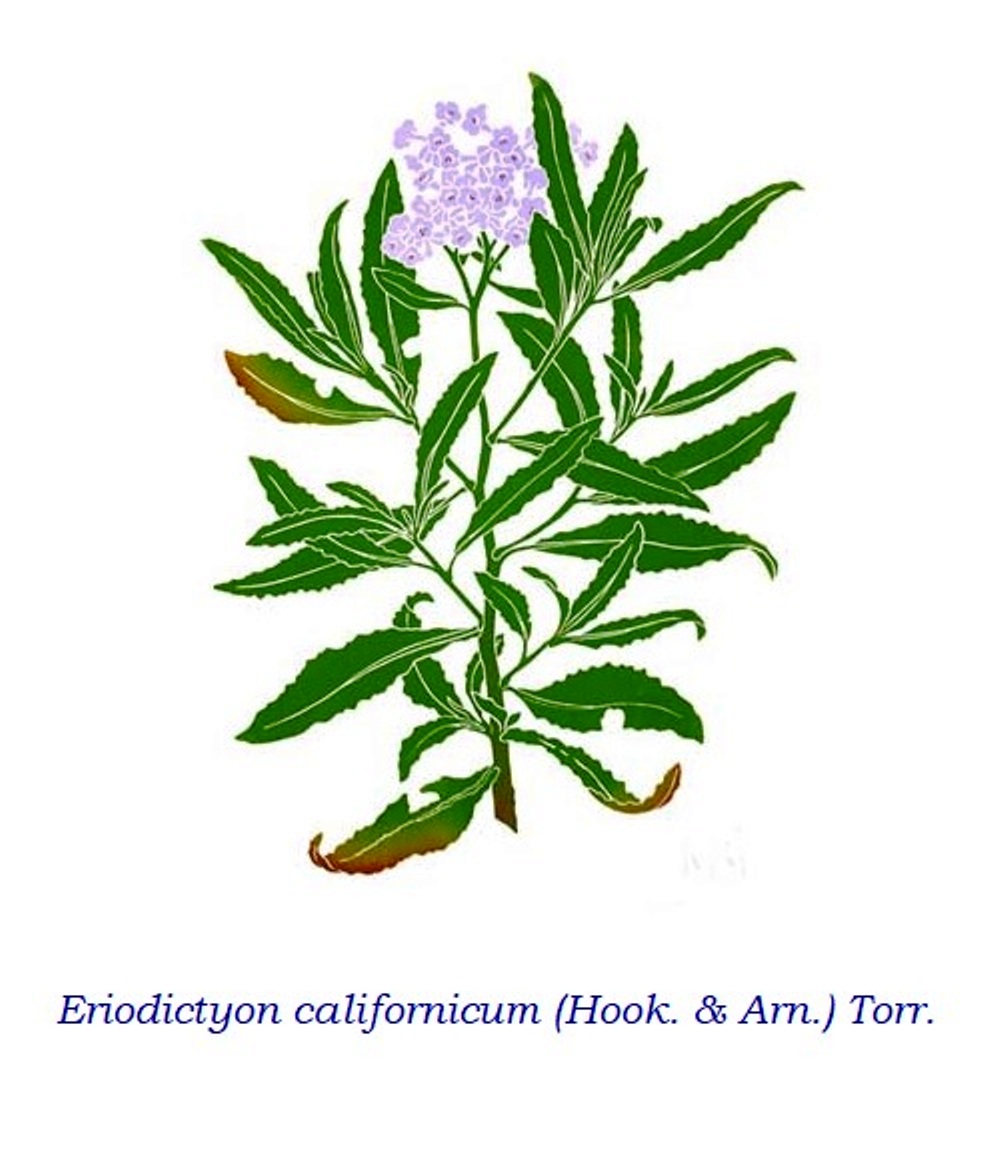Eriodictyon californicum
Eriodictyon californicum
Sacred herb (Eriodictyon californicum (Hook. & Arn.) Torr.) Is a shrub species belonging
to the family of Boraginaceae.
Systematics –
From a systematic point of view it belongs to:
Eukaryota Domain,
Kingdom Plantae,
Division Magnoliophyta,
Class Magnoliopsida,
Subclass Asteridae,
Order Lamiales,
Family Boraginaceae
Genus Eriodictyon
Species E. californicum.
The term is synonymous:
– Wigandia californica Hook. & Arn .;
Etymology –
The term Eriodictyon derives from the two Greek terms erion for wool and diktuon for net, referring to the consistency of the lower part of the leaves.
The specific epithet californicum comes from California, due to its probable origins.
Geographic Distribution and Habitat –
Sacred herb is a plant growing in central northern California, Oregon, and the southwestern part of North America.
Its habitat is quite variable, among which we recall the shrub vegetation of the chaparral and the forest, on the dry mountain slopes at altitudes up to 1,200 meters.
Description –
Erydictyon californicum is an evergreen aromatic shrub that can grow up to 2.25 meters in height.
The plant is formed from woody rhizomes.
The leaves are dark green and leathery, with a narrow conformation and shape from oblong to lanceolate and up to 15 centimeters long.
Both the foliage and the twigs are covered with glossy resin and often covered with smoke.
The flowers are grouped in a bell-shaped inflorescence, white to purple in color, each with a length of between one and two centimeters.
Cultivation –
Eriodictyon californicum is a plant that grows spontaneously and is part of the typical vegetation of the California earnest and the south-western area of North America.
The plant propagates by seed and is collected in nature as a medicine for local use.
The plant is also an occasional source of food for wildlife and livestock, although its bitterness makes it unpleasant to most animals, although it is visited by herbivores and butterflies.
This plant is used to revive damaged or disturbed land, such as over-exploited pastures. The plant is highly suitable for re-growing after fire, as it sprouts from rhizomes after a fire and develops a waxy film of flammable resins on its foliage.
Customs and Traditions –
Sacred herb is a plant known and used since ancient times and whose leaves have historically been used to treat asthma, upper respiratory tract infections, and allergic rhinitis.
The Concow tribe calls the plant wä-sä-got’-ō (Konkow language). The Chumash used it as a poultice for wounds, insect bites, broken bones, and sores. It was also used in a steam room to treat hemorrhoids.
This plant is a famous home remedy from southwestern North America where it is also considered particularly useful as an expectorant. In the pharmaceutical field, it is an ingredient in many patented cough medicines.
In fact, in herbal medicine, the leaves are an aromatic tonic herb with a pleasant taste that reduces spasms, expels phlegm and lowers fever.
They are particularly suitable for the treatment of chest and respiratory diseases, including asthma, and are also used in the treatment of hay fever.
The leaves, as mentioned, still have an odor generally considered unpleasant and a bitter taste, making them disgusting for most animals.
The active ingredients in the plant are chrysoeriol, eriodictiol, homoeriodictiol (flavonoids).
Medical research has also identified sterubin (flavonoid) as the main active component of the plant, which is neuroprotective against multiple toxicities of brain aging, perhaps including Alzheimer’s disease.
The organs affected by phytotherapeutic action are urogenital apparatus, bronchi, oropharyngeal cavity, gonads, testes, nasal mucosa, lungs, and immune system.
In addition, there are no particular contraindications except in cases of individual hypersensitivity.
From the food point of view, some alkaloids found in the plant, such as eriodicthiol, are used for potential uses in the food and pharmaceutical industry to mask the bitter taste.
From an ecological point of view, Eriodictyon californicum, as mentioned, is a food plant for some animals and is specific to the butterfly Papilio eurymedon; it is also the main source of nectar for the Jasper Ridge Biological Preserve in California.
Preparation Mode –
The leaves of the Sacred herb are used in a variety of ways.
They prepare a bitter tea, which is widely used as a bitter tonic and stimulating balsamic expectorant.
From the branches and leaves, a steam bath is prepared, used in the treatment of rheumatism.
The leaves also prepare a decoction, used to wash the painful areas and tired aching limbs.
By rolling the leaves into balls and letting them dry in the sun, a natural mouthwash is prepared. They are then chewed and have a bitter taste at first, but this is soon replaced by a sweetness if you drink water.
The plant was smoked as a remedy for asthma.
The leaves are harvested in summer and dried for later use.
Guido Bissanti
Sources
– Acta Plantarum – Flora of the Italian Regions.
– Wikipedia, the free encyclopedia.
– Useful Tropical Plants Database.
– Conti F., Abbate G., Alessandrini A., Blasi C. (edited by), 2005. An annotated checklist of the Italian vascular flora, Palombi Editore.
– Pignatti S., 1982. Flora of Italy, Edagricole, Bologna.
– Treben M., 2000. Health from the Lord’s Pharmacy, Advice and experiences with medicinal herbs, Ennsthaler Editore.
Warning: Pharmaceutical applications and alimurgical uses are indicated for informational purposes only, they do not represent in any way a medical prescription; therefore no responsibility is taken for their use for curative, aesthetic or food purposes.


